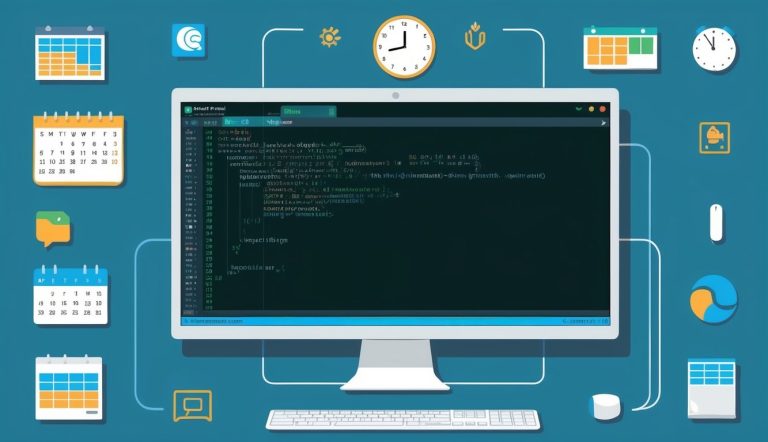Setting Up Crontab Files
Crontab files are the backbone of Linux task automation, allowing users to schedule commands or scripts to run at specific times. Each user on a system can have their own crontab file, while system administrators can manage system-wide tasks.
Editing Crontab Entries
To start working with crontabs, open a terminal and use the crontab -e command. This opens the user’s crontab file in the default text editor.
crontab -eFor system-wide cron jobs, administrators can edit the /etc/crontab file directly. These system crontabs require specifying which user will run each command.
sudo nano /etc/crontabTo view existing cron jobs without editing them, users can use:
crontab -lThe -r option removes all crontab entries, so it should be used with caution. For better organization, users should add comments before each job entry using the # symbol to explain what each job does.
Syntax and Operators
The crontab syntax consists of five time fields followed by the command to execute:
minute hour day-of-month month day-of-week commandEach field accepts specific values:
- minute: 0-59
- hour: 0-23
- day-of-month: 1-31
- month: 1-12 (or names like JAN, FEB)
- day-of-week: 0-6 (Sunday=0 or 7)
Special operators make scheduling more flexible:
- Asterisk (*): Represents all possible values
- Comma (,): Lists multiple values (e.g., 1,3,5)
- Hyphen (-): Defines ranges (e.g., 1-5)
- Forward slash (/): Specifies intervals (e.g., */10)
For example, to run a backup script every day at 2:30 AM:
30 2 * * * /path/to/backup.shScheduling Best Practices
When configuring cron jobs, it’s crucial to consider system resources and timing. Schedule resource-intensive tasks during off-peak hours to minimize impact on system performance.
Always use absolute paths for both the commands and their target files. Environment variables may not be available in cron’s environment, so explicitly define any needed variables at the top of the crontab file.
PATH=/usr/local/sbin:/usr/local/bin:/usr/sbin:/usr/bin:/sbin:/binTest complex commands manually before adding them to crontab. Redirect output to log files for troubleshooting:
30 2 * * * /path/to/script.sh >> /path/to/logfile.log 2>&1For critical cron jobs, implement error handling and notification mechanisms. Consider using tools like anacron for machines that aren’t running 24/7 to ensure jobs still execute when the system returns online.


